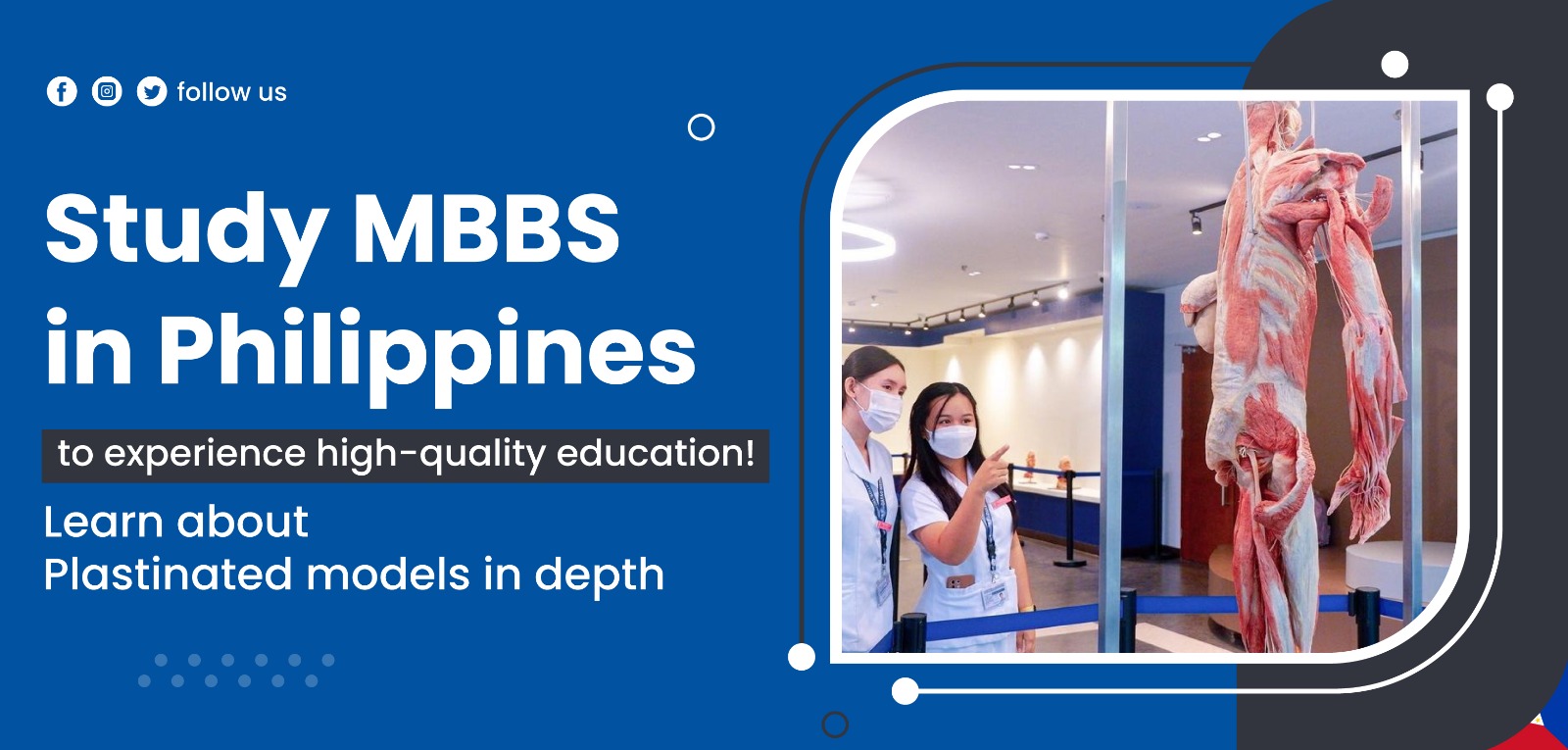
Study MBBS in Philippines to experience high-quality education!
Learn about Plastinated models in depth
Plastinated models are a remarkable scientific and educational tool that has revolutionized the study of anatomy. Developed by the German anatomist Gunther von Hagens, plastination involves replacing the natural fluids and fats in biological tissues with a polymer that solidifies the specimen. This process creates incredibly detailed and durable anatomical models that accurately preserve the form and structure of the human body. Plastinated models provide a unique opportunity for medical students, researchers, and the general public to explore the intricacies of human anatomy, allowing for a hands-on learning experience without the need for cadavers. These models have become invaluable in medical education, as they enable a comprehensive understanding of human anatomy and aid in the advancement of surgical techniques and medical knowledge.
Benefits of using plastinated models for medical studies
Studying medicine through plastinated models offers numerous benefits and applications. Firstly, plastinated models provide medical students with a realistic and tangible representation of the human body's anatomy, allowing for a hands-on learning experience. Students can explore and examine the intricate structures and systems of the body, gaining a deep understanding of their spatial relationships and functions.
Plastinated models also offer a safe and ethical alternative to working with cadavers. While cadaver dissection has traditionally been a fundamental part of medical education, it can be limited by availability, ethical concerns, and the preservation of specimens. Plastinated models overcome these challenges by providing a permanent and readily available resource that can be used repeatedly without degradation.
Furthermore, plastinated models allow for the study of pathological conditions and variations. By incorporating diseased or abnormal structures into the models, students can observe and understand the impact of various diseases on the body. This helps in developing diagnostic skills and enhances the understanding of medical conditions.
Another significant advantage of plastinated models is their use in surgical training and preparation. Surgeons can practice and refine their surgical techniques on these models, simulating real surgical scenarios without putting patients at risk. This enables surgeons to enhance their technical skills and improve patient outcomes.
Plastinated models also play a crucial role in patient education. They allow healthcare professionals to visually explain complex medical conditions and procedures to patients, facilitating better communication and understanding.
The Philippines provides an excellent opportunity for Indian students seeking an affordable yet high-quality medical education. The medical colleges in the Philippines are known for their utilization of advanced learning resources, ensuring a top-notch education. Among the many options available, Davao Medical School Foundation (DMSF) stands out as an exceptional choice. DMSF offers a world-class education that guarantees the best possible learning experience. By joining DMSF, students can avail themselves of the benefits of superior medical education. Consider DMSF as your gateway to a successful medical career.
